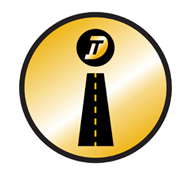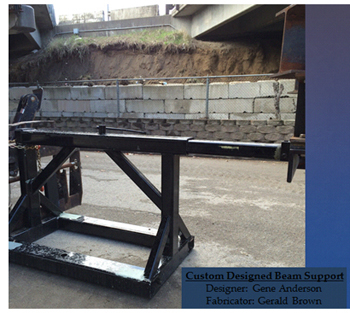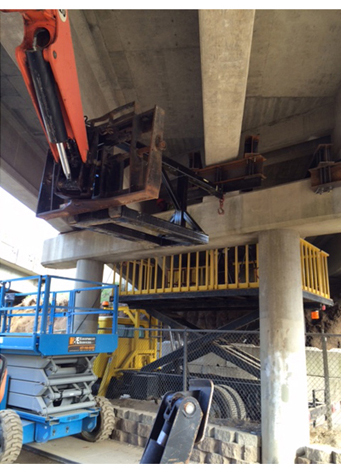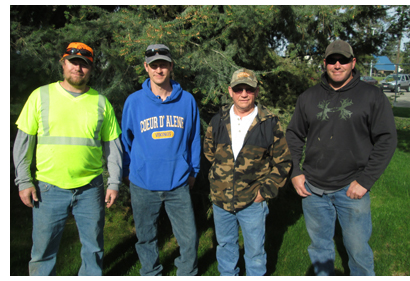

Sliding girder installer saves significant money, reduces bridge closures
by months, lessens traffic impacts
Foreman Gene Anderson and his three-man District 1 Bridge & Building crew leveraged creation of a sliding girder installer to complete repairs to the 56-year-old Interstate 90 Pennsylvania Avenue Bridge in just three weeks this spring. The repairs extended the life of the bridge to safely serve area drivers (approximately 22,000 each day) until the bridge is fully replaced in 2020 using a contractor. The innovation also helped reduce the duration of the closure by months, which allowed traffic to resume using the bridge much sooner.
The repairs extended the life of the bridge, addressed needs of heavy truck traffic, nearby residents and school children, and saved approximately $161,000. The bridge provides a critical conduit for local law enforcement and emergency responders, both of whom were best served by a more quickly completed bridge project.
“The repair utilized innovation to meet a critical driver safety need in the area, satisfy local commerce and residents, and save significant money for the Idaho Transportation Department, which also means savings for taxpayers,” summarized District Business Operations Manager Scotty Fellom.
ITD’s crew completed these repairs at a cost of $39,000 (most of that was steel), saving significantly compared to the estimated $200,000 it would likely have cost a contractor to do the same work.
The project involved shoring up the girders on the westbound approaches to the bridge.
The approach had dropped approximately 3/8-inch, creating an unsafe driving surface.
“There were places on the bridge where a man’s arm could be pushed through,” Fellom said.
After several trips to the site to assess the situation, Anderson and his crew (T.J. Gibson, George Lukes and Nick Primmer) came up with an innovative solution to the repairs.
Previous patches had been cosmetic, but this repair required a structural solution. The bridge will be replaced in four years, but a temporary fix was needed to fill the gap until the future replacement.
The crew started by excavating 120 truckloads of dirt (10 cubic yards each) to facilitate the repairs, so they could build a road next to the bridge to stage a loader with a crane arm.
By devising the sliding/adjustable girder installer/girder support system (pictured at left), the crew could lift the six girders, each weighing about 300 lbs., into place three at a time rather than one at a time, as a regular contractor would likely have done.
This sped up the repairs, and also solved a huge safety consideration due to the excessive weight of the girders.
This innovation, and the resulting repairs, allowed the department to meet the needs of local businesses, which rely on the bridge for deliveries. The bridge also allows access to a subdivision and residents in the area, including the ritzy French Gulch Subdivision. As the only route under the freeway, school children in the area traveled under the bridge to get to Fernan STEM Academy, a kindergarten-through-fifth grade elementary school serving about 450 students. The school is half a block south of the bridge.
ITD crewmembers stopped work and escorted the children walking or bicycling past the work zone each morning and evening. Crews worked Monday through Thursday, and the site reopened each weekend to unrestricted use.
The work was done in conjunction with the city of Coeur d’Alene.
“We in the transportation industry constantly hear about unsafe bridges and a lack of available funding to do anything about the problem,” said Fellom. “The approach taken by the Bridge & Building crew addressed both of these issues in a rapid manner, possibly providing a template for other ITD districts faced with similar issues, and state DOTs regionally or nationally.”
Pictured, left to right: Gibson, Lukes, Anderson, Primmer.
Times 7 Focus: Ideally, these innovations will not live in a silo — they will be catalysts for ITD’s other district offices and work areas, and inspire duplication statewide. These innovations represent time and money-saving measures, process improvements, and customer-service efficiencies that are transferrable to other districts. In that spirit, if this innovation is something you’d like to adapt to your own district or work space, and you have any questions, please contact District 1 Business Operations Manager Scotty Fellom at 1-1202.
Published 08-12-16